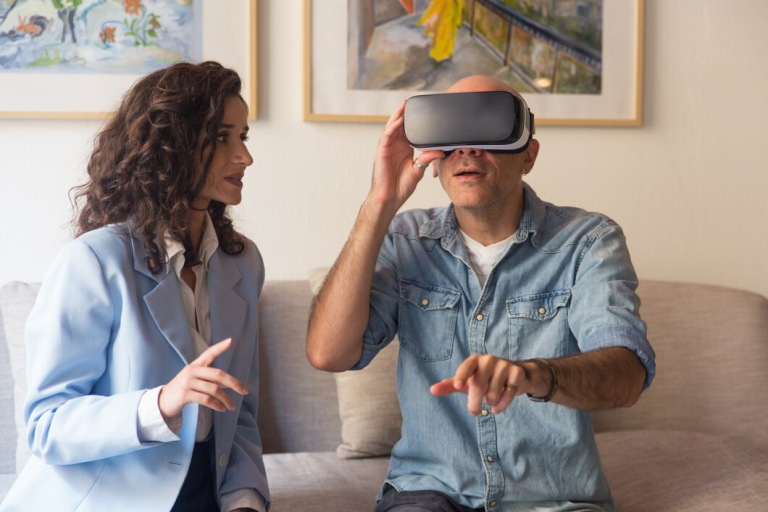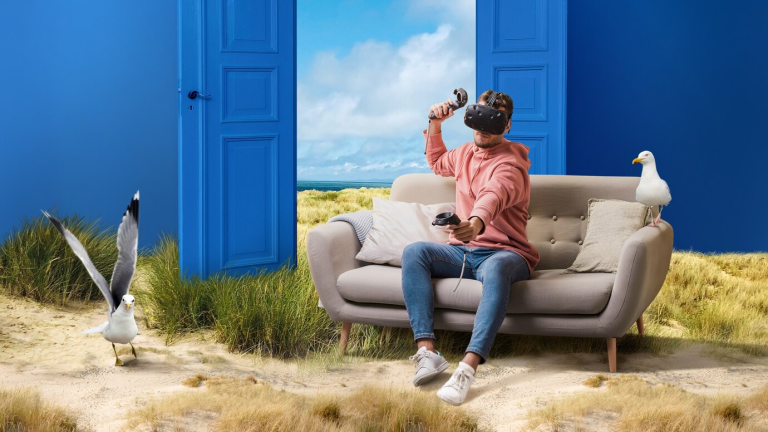In recent years, Virtual Reality (VR) has made significant strides in reshaping the way architects and interior designers collaborate on projects. Among the emerging trends in the field, one stands out prominently: Social VR Collaboration. This innovative approach has revolutionized the way professionals in these industries work together, share ideas, and make critical decisions. In this blog post, we’ll delve into the world of Social VR Collaboration and explore how it’s transforming the landscape of architecture and interior design.
The Power of Virtual Reality in Collaboration
Before we dive into the specifics of Social VR Collaboration, let’s briefly touch on why Virtual Reality is such a game-changer in the world of architecture and interior design.
Immersive Experience: VR offers an immersive experience that allows users to step into a virtual environment. Architects and designers can create 3D models of their projects and bring them to life in a way that traditional 2D drawings or even 3D renderings simply cannot match. This immersive experience is crucial for conveying design intent and ensuring that all stakeholders are on the same page.
Real-time Interaction: VR enables real-time interaction with the virtual environment. This means that architects, designers, clients, and other project stakeholders can explore the space together, regardless of their physical locations. It bridges the gap between on-site and remote collaboration, making it possible for global teams to work as if they were in the same room.
Better Decision Making: The ability to interact with a VR model in real time allows for better decision making. Design changes can be implemented on the fly, and everyone involved can see the immediate impact. This accelerates the design process, reduces errors, and ultimately leads to more successful projects.
Social VR Collaboration: Breaking Down Barriers
Now, let’s get into the heart of the matter: Social VR Collaboration and its transformative impact.
Shared Virtual Spaces: Social VR Collaboration platforms create shared virtual spaces where multiple users can meet and interact. These platforms often mimic real-world meeting environments, such as conference rooms or collaborative workspaces. In these spaces, architects, designers, and clients can come together, regardless of their geographical locations.
Real-time Communication: Communication is at the core of collaboration. Social VR Collaboration platforms offer real-time voice and sometimes even hand gesture communication. This means that users can discuss design ideas, point out details, and have natural conversations within the virtual environment.
Design Review and Feedback: One of the most valuable aspects of Social VR Collaboration is the ability to conduct design reviews and gather feedback in real time. Imagine walking through a virtual building with your client, discussing layout changes, material choices, and lighting options as if you were physically present in the space. This level of engagement ensures that all parties have a clear understanding of the design intent and can provide immediate input.
Cross-disciplinary Collaboration: Architects, interior designers, structural engineers, and other specialists often need to collaborate on a project. Social VR Collaboration breaks down the barriers between these disciplines by providing a shared platform where experts from various fields can collaborate seamlessly. This interdisciplinary collaboration leads to holistic and well-coordinated designs.
Client Engagement: Clients play a crucial role in the design process. Social VR Collaboration platforms allow clients to immerse themselves in the project, giving them a deeper understanding of the design and a greater sense of ownership. This level of engagement can lead to more satisfied clients and smoother project outcomes.
Real-world Applications
Social VR Collaboration is not just a concept; it’s being actively used in architecture and interior design today.
Client Presentations: Architects can use Social VR Collaboration to present design concepts to clients in a more engaging and interactive manner. Clients can explore their future spaces and provide feedback in real time, resulting in designs that better align with their vision.
Remote Collaboration: Design teams that are spread across different locations can collaborate seamlessly in a virtual environment. This is particularly valuable in today’s globalized world, where talent and expertise may be distributed worldwide.
Design Charrettes: Design charrettes, which are collaborative design workshops, have been reimagined in VR. Architects and designers can host virtual charrettes where participants brainstorm and sketch out ideas together in a shared virtual space.
Cross-functional Coordination: Social VR Collaboration is used to facilitate coordination between various teams involved in a project. Structural engineers, electrical engineers, and HVAC specialists can all come together in VR to ensure that the design meets all technical requirements.
The Future of Collaboration is Virtual
Social VR Collaboration is not just a trend; it represents the future of collaboration in architecture and interior design. As technology continues to advance, these platforms will become more sophisticated, offering even greater capabilities and realism.
As architects and designers embrace Social VR Collaboration, they will find themselves better equipped to create innovative, well-coordinated, and client-focused designs. With the ability to bring together diverse teams, engage clients in new ways, and make design decisions in real time, the future of architecture and interior design looks incredibly promising.
The era of virtual collaboration has arrived, and it’s transforming the way we design and build the spaces we inhabit. As architects and designers, it’s essential to embrace these emerging technologies to stay at the forefront of the industry and deliver exceptional results to our clients.
Stay tuned for more updates on the evolving landscape of architecture and interior design in the world of Virtual Reality and Social VR Collaboration.






